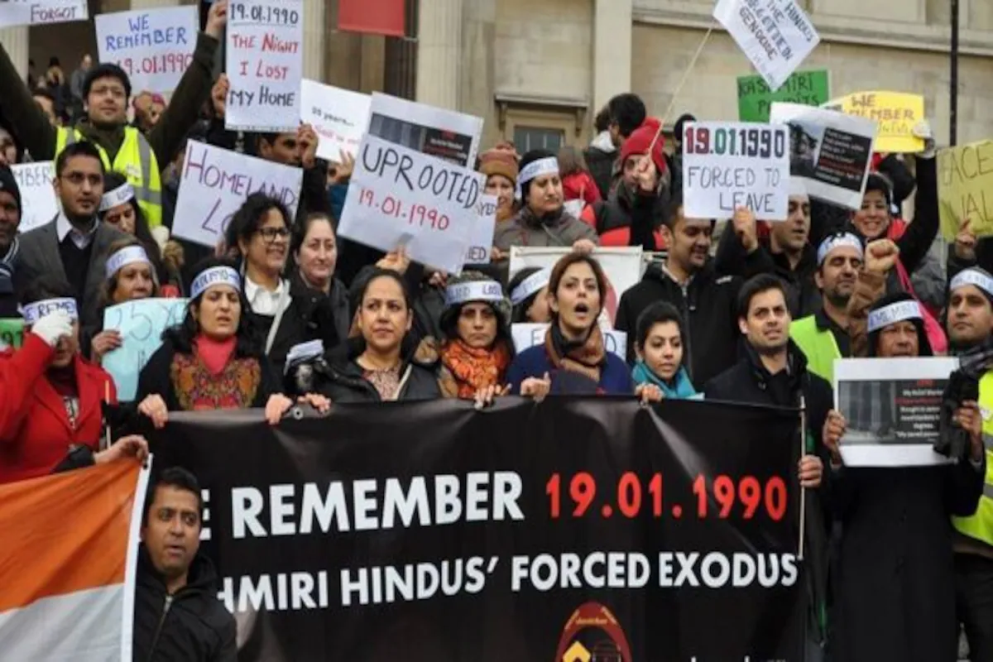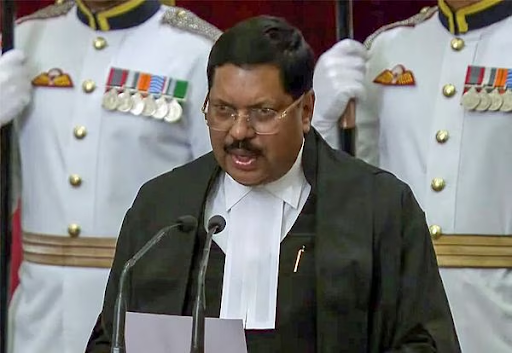Description

Copyright infringement not intended
Context - The Jammu and Kashmir officials visited several Kashmiri Pandit camps and advised them not to leave the Valley due to the recent incidence of violence.
About Kashmiri Pandits
- The Kashmiri Pandits originally lived in the Kashmir Valley before the growth of Islamic militancy in the valley.
- The Kashmiri Pandits had been a favoured section of the population of the valley during Dogra rule (1846–1947). 20% of them left the valley as a consequence of the 1950 land reforms, and by 1981 the Pandit population amounted to 5% of the total Population.
- They began to leave in much greater numbers in the 1990s during the eruption of militancy, following persecution and threats by radical Islamists and militants. The events of 19 January 1990 were particularly vicious.
- There is no official data, but approximately 100,000 of the total Kashmiri Pandit population of 140,000 left the valley during the 1990s.
- Many of the refugees Kashmiri Pandits have been living in abject conditions in refugee camps of Jammu. The government has reported on the terrorist threats to Pandits still living in the Kashmir region.
- In 2010, the Government of Jammu and Kashmir noted that 808 Pandit families, comprising 3,445 people, were still living in the Valley and announced financial and other incentives to encourage others to return.
- According to a Jammu and Kashmir government report, 219 members of the community had been killed in the region between 1989 and 2004 but none thereafter
- The local organization ‘Kashmir Pandit Sangharsh Samiti’ after carrying out a survey in 2008 and 2009, said that 399 Kashmiri Pandits were killed by insurgents from 1990 to 2011 with 75% of them being killed during the first year of the Kashmiri insurgency.
What happened in January 1990?
- By then, the Farooq Abdullah government had been dismissed and Governor’s Rule imposed.
- According to accounts published by many Kashmiri Pandits, there were threatening slogans over loudspeakers from mosques, and on the streets.
- Speeches were made extolling Pakistan and the supremacy of Islam, and against Hinduism. The Kashmiri Pandit community decided to leave.
- The flight – On January 20, the first stream began leaving the Valley with hastily packed belongings in whatever transport they could find.
- The Gawkadal massacre - In January 21, the CRPF gunned down 160 Kashmiri Muslim protesters at the Gawkadal Bridge, the worst massacre in the long history of the conflict in Kashmir.
- Effect - The two events (the flight of the Pandits and the Gawkadal massacre) took place within 48 hours, but for years, neither community could accept the pain of the other, and in some ways, still cannot.
Present Status of Kashmiri Pandits
- According to the Home Ministry, several Kashmiri migrants reside at existing transit accommodation at Vessu (Kulgam), Mattan (Anantnag), Hawl (Pulwama), Natnusa (Kupwara), Sheikhpora (Budgam) and Veerwan (Baramulla) in the Kashmir Valley other than the camps in Jammu.
- There are zones set up with offices for relief. Many Orders, Circulars and recommendations have been issued for relief of Kashmiri Pandits.
- Following the migration of the Kashmiri Pandit community, various socio-political organizations have sprung up to represent the cause of the displaced community. These organizations are involved in rehabilitation of the community in the valley through peace negotiations, mobilization of human rights groups and job creation for the Pandits.
- In the 1981 census, the Kashmir Division had 124,078 Hindus, the majority of whom were Pandits. Following the 1989 insurgency, a great majority of Pandits felt threatened and left the Kashmir Valley to other parts of India. By 2011, only an estimated 2,700-3,400 Pandits remained in the Kashmir Valley.
- According to Indian government, more than 60,000 families are registered as Kashmiri migrants including some Sikh and Muslim families. Most families were resettled in Jammu, NCR and other neighboring states.
- According to a 2020 parliamentary panel report, there are 64,827 registered migrant families in J&K — 60,489 Hindu families, 2,609 Muslim families and 1,729 Sikh families.
- Out of the 64,827 families, 43,494 are registered in Jammu, 19,338 in Delhi and 1,995 families are settled in other States and Union Territories.
- The exiled community had hoped to return after the situation improved. They have not done so because the situation in the Valley remains unstable and they fear a risk to their lives.
- There is an acute realization in the community that the Valley is no longer the same that they left behind in 1990.
- Those who had rebuilt their lives elsewhere in the country or went abroad, they are less likely to return to the Valley.
- Many of those who did return under a government job scheme, they live in migrant colonies and do not have basic amenities like a ration card or even a voter ID card.
Steps taken by Government
- The Jammu And Kashmir Migrant Immovable Property (Preservation, Protection And Restraint on Distress Sales) Act, 1997, provides that "Any person who is an unauthorized occupant or recipient of any usufruct of any immovable property of the migrant shall pay to the migrant such compensation for the period of unauthorized occupation and in such a manner as may be determined by the District Magistrate.
- As of 2016, a total of 1,800 Kashmiri Pandit youths have returned to the valley since the announcement of Rs. 1,168-crore package in 2008 by the UPA government.
- The Union government, under the Prime Minister’s Development Package announced in 2015, had approved the creation of 3,000 government jobs for Kashmiri migrants. So far, 1,739 migrants have been appointed and 1,098 others selected for the jobs.
- A similar package for migrants was announced by the UPA government in 2008 under which 2,905 jobs had been filled out of the 3,000 jobs approved.
- In 2015, as many as 6,000 transit accommodation units were announced for the members who were to be provided jobs by the J&K administration at a cost of Rs 920 crore.
https://epaper.thehindu.com/Home/ShareArticle?OrgId=GP49QTFJA.1&imageview=0














